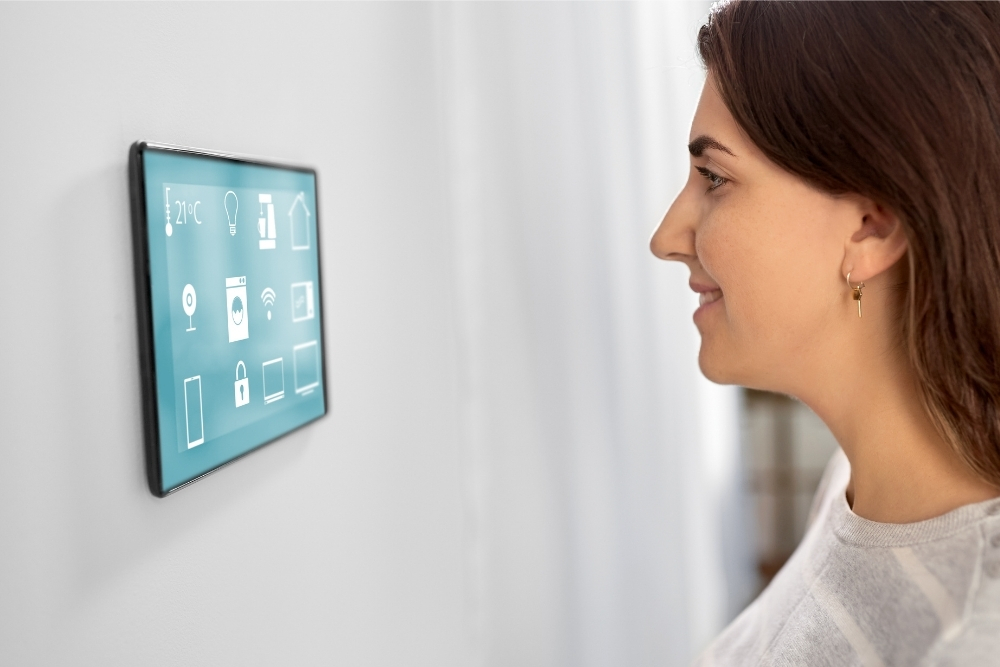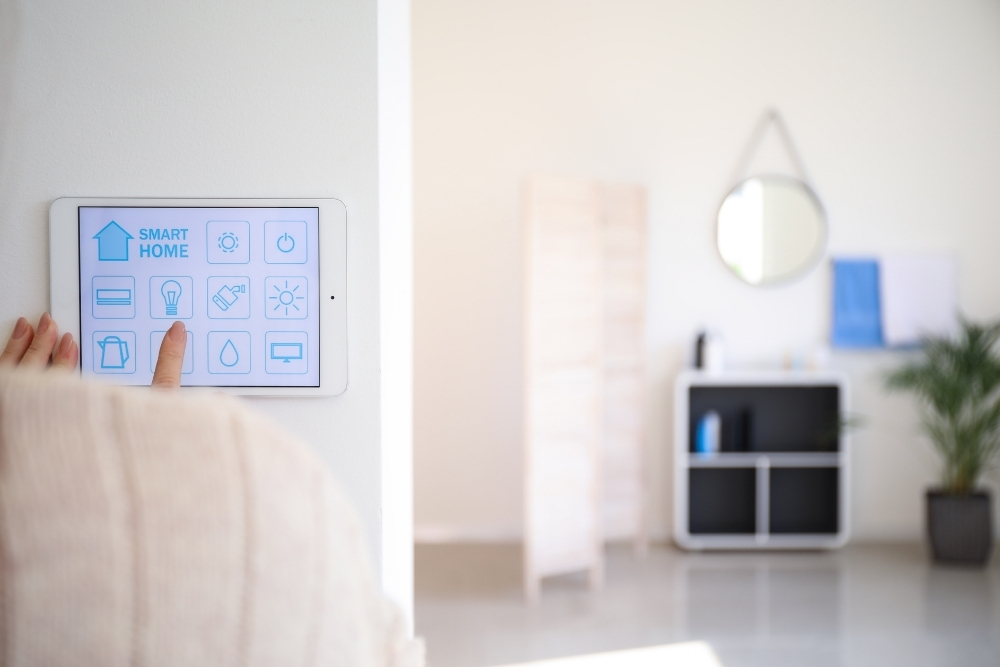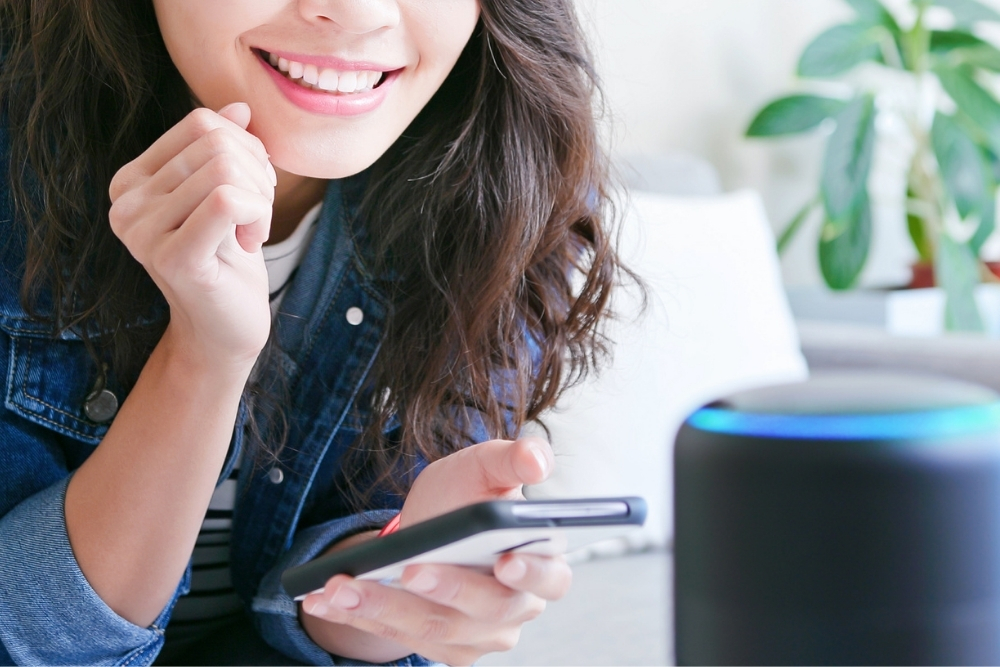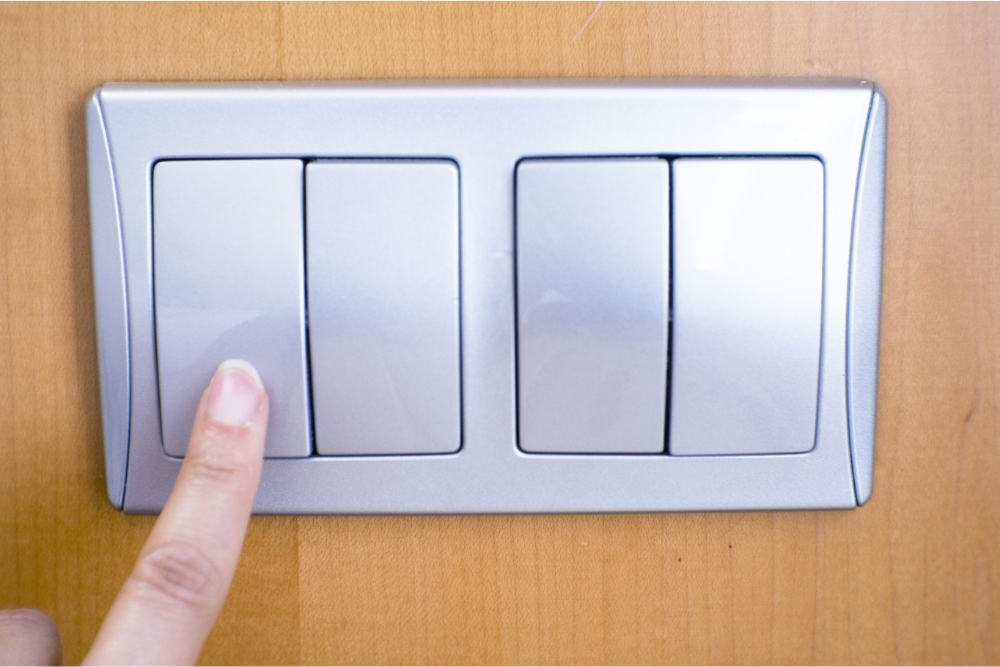Everything You Need to Know About the Domesticated Aurora That Is Philips Hue Lighting
It used to be that if you wanted to introduce some “mood lighting” to your house, you’d pop to the store, buy a discount lava lamp, chuck it on your bedside table, and be done with it.
These days, the world of affordable ambient lighting has exploded…big-bang style, and you can customize the luminous aspect of your living space in more ways than you could possibly imagine!

We, of course, have the “Smart” revolution to thank for this, birthing such wonders as Philips Hue, the undisputed leader of the smart lighting industry.
Now, it’s not that there aren’t other companies throwing their LED hats into the ring, but nothing comes remotely close to Philips Hue in terms of choice, usability, functionality, and connectivity.
If this all sounds great, yet a little intimidating to you, don’t worry; you’re in the right place. Welcome to your comprehensive guide to everything Hue! I’ll be covering what Hue is, how it works, your choice of bulbs, and much, much more!
Let’s Begin at the Beginning — What Exactly Is Philips Hue?
In essence, Philips Hue is a range of LED bulbs and fixtures with bigger brains than your garden variety lighting.
Hue bulbs and fixtures connect wirelessly to something called the Hue Bridge. The Hue Bridge is actually just a little, square, modem-type box — it kind of looks like a fancy fire alarm.
The Hue Bridge is plugged into your Wi-Fi router, then it can be connected to your phone via the Hue app, or introduced to a virtual assistant of your choosing, unlocking voice commands.
Using the app, you can set up custom light sequences, vibrancy, colors…you name it. The app sends the message to Hue bridge, then the Bridge sends the commands wirelessly to your lighting.
Most people are drawn to the vast color potential of Philips Hue lighting, but that might not be the case for you. If you’re just looking for articulate control over an array of normal white bulbs, Philips Hue can provide it.
Next Up…How Can You Get These Lights Working?
Despite the depth of Philips Hue features, it’s a relatively simple system to set up — hooray! Here’s how it’s done…
- Plug your Hue Bridge into the wall power.
- Use an Ethernet cable to connect Hue Bridge to your router.
- Get your Hue bulbs in place or switch on your Hue fixture.
- Download the Philips Hue app (it works on both Android and iOS).
- Let the app guide you through the pairing process.
Once set up is complete, you can drive straight into customization. It all starts with you giving each individual light a unique name on the Hue app. Next, organize the lights into logical groups. For example, you may want to put all the lights in your living room into a single unit.
Using the Hue app or voice commands via your virtual assistant, you can control individual lights, or if you wish to illuminate a full room, entire groups as one.
If you want an instant dose of Hue capabilities, you can explore the many preset “scenes”. Scenes are shades, color combinations, or random sequences built into the Hue app. When selected, your lighting will instantly begin “playing out” your scene of choice.
There are some nice, low-key scenes involving soft white or daylight tones, some more vivacious options such as Spring Blossom (a random assignation of pink, red, and white), Tropical Twilight (mellow pinks and purples — you can imagine sipping a drink this color out of a coconut), and, my favorite Arctic Aurora (an aquatic concoction of blues and greens).
One of the most exciting things about Hue is that you can also create your own scenes, and save them in the app, ready for retrieval whenever you’re in the mood — It’s awesome!
But How Does It All Work?
Well, although it seems like genuine witchcraft, Philips Hue has nothing to do with magic. The thing doing the heavy lifting here is known as ZigBee, which sounds like a character from a show designed for kids, but, at 40 years old, you secretly dig too, but I can assure you, it’s not.
You can think of ZigBee as a variation of Wi-Fi or Bluetooth. It’s a means of wireless communication, and it enables your Hue lights to talk to the Bridge, as well as each other.
Each Hue Bridge and light features an integrated ZigBee radio, which acts as their voice and ears. Simply put, it’s the thing that makes smart lights, well…smart.
It’s the job of the Bridge to translate Wi-Fi signals into Zigbee signals and vice versa, thereby forming the intangible chain that runs from your phone (or smart home hub) to your light bulbs.
As long as your phone has signal, this chain is always in place, meaning you can control your lighting from anywhere in the world. Say, for example, you’ve had a tough day at work. You can set up a soothing scene to walk into when you open the door.
How Much Is This…ZigBee Going to Cost Me?
This day and age, intangible things can cost a small fortune, so you’re wise to be suspicious of ZigBee, but I’m happy to report that it’s completely free to run!
The cost of Zigbee is covered in the price of Hue hardware. It’s not like Wi-Fi where you have to pay a monthly subscription, but that doesn’t mean you can tell your ISP to shove their fiberoptic where the sun don’t shine, as you can’t use ZigBee to access the internet.
Zigbee is a completely self-enclosed wireless network local to your house, connecting the smart gadgets and gizmos within.
Is ZigBee Secure?
Cards on the table…like any radio system, Zigbee can be hacked, but, as a local network, it’s far more secure than Wi-Fi. Furthermore, every bit of data that passes from Wi-Fi to ZigBee and from ZigBee to Wi-Fi is scrambled by top-notch encryption protocols the folks over at Philips Hue are constantly galvanizing with firmware updates.
What About Hue Bridge?
Remember when I mentioned that the Hue Bridge has to be physically connected to your router? Well, that’s not just so you have a guaranteed connection to the network, it’s also a matter of security.
Wireless signals are far easier to intercept, so the use of an Ethernet cable is a pretty robust defense mechanism. You’ll also have to push the central button on the Bridge to pair it with your phone or authorize the connection of any peripheral devices, so short of breaking into your home, cyber ne’er do wells are out of luck!
In the incredibly isolated events involving some sort of unforeseen vulnerability in the Hue system, Philips is quick to address and solve the issue, so there’s really very little to worry about. As you’re joining the Hue party pretty late in the game, you’ll walk right into a very secure smart ecosystem.
Of course, you can help to secure your Hue network as well by choosing strong Wi-Fi passwords and switching them up from time to time.
Where Does Bluetooth Come into Play?
Some newer Hue bulbs arrive with a Bluetooth radio as well as ZigBee, allowing them to connect directly to your phone, sans Bridge. This is a practical option for those looking for lovely lighting on a budget or those who aren’t necessarily interested in some of Hue’s more advanced features.
To control your Bluetooth Hue lights, you’ll use a separate, slightly watered-down Hue app. You’ll still be able to do a bunch of neat things, such as…
- Control brightness
- Create custom scenes
- Control your lights from your phone
- Group lights for efficiency
…but you won’t be able to…
- Control your lights remotely when you’re outside Bluetooth’s range
- Use advanced features such as Hue Entertainment (more on that in just a moment)
- Connect to most 3rd-party devices and services such as an Amazon Echo or Apple HomeKit.
Let’s Talk Advanced Features
The most basic of the advanced Hue features is automation, but even automation can get pretty crazy. It can be as simple as setting your living room lights to turn at 6.30 to give burglars the impression that you’re in the home, or as complex as programming a light to blink when you receive an email.
You can even introduce some motion sensors and have individual or multiple lights burst into action when somebody walks by.
But it’s not until you link your Hue array up to other devices and services that you really unlock its true potential. Take wake-up lighting, for instance. This nifty collaboration between Hue and Google Assistant will gently fade in your bedroom lights in the morning, easing you into the day.
Then there’s the magnificent Hue Entertainment I mentioned earlier, which involves syncing Hue lights with your computer, allowing them to mimic the changing on-screen colors and vibrancy. While not a practical feature, it can certainly make a gaming session more immersive!
If you’re willing to invest in the Philips Hue Play Midi Sync Box, you can bring that same syncing technology to your TV screen, and electrify your movie nights or console gaming.
Do Philips Hue Bulbs Play Nice with Other Smart Devices and Platforms?
Broad compatibility is one of the best things about Philips Hue smart lights; they work with all the major smart home utilities, including the big three virtual assistants, Alexa, Siri, and Google Assistant. Hue will also make friends with lesser-used assistants such as Microsoft’s Cortana.
If you’re an Alexa home with an Echo Plus, you’ll be able to link your Hue lights directly to the Echo, as it features a built-in ZigBee radio, meaning you wouldn’t need a Hue Bridge. However, that means all functionality runs through the Alexa rather than Hue app.
If you do fork out for the Philips Hue Bridge Smart Hub, you’ll enjoy connectivity to a wide array of smart home platforms, including Samsung SmartThings, Wink, and the more security-focused systems like Vivint and Comcast Xfinity Home.
The Hue Bridge will also connect to affordable off-brand smart lights as long as they use the Zigbee wireless protocol.
The Hue system is compatible with smart switches like the RunLessWire Click, too. Usually, if a light switch linked to your Hue bulbs is off, Zigbee signals cannot be received, but smart switches grant permanent access to the signals sent from the Hue Bridge.
Philips Hue has been adopted as the smart lighting brand by the smart industry, which means most future smart devices will be compatible with Hue, providing you with an ever-growing list of pairing options.
Let’s Talk Bulbs — What’s Out There?
Brace yourself, because I’m about to throw a ton of options your way!
- Philips Hue White LED — A simple, dimmable white LED bulb.
- Philips Hue White Ambiance — Adds adjustable color temperature (perfect for those who find standard white light a little harsh.
- Philips Hue White and Color Ambiance — Dimmable, temperature adjustable, and grants access to the full Hue color spectrum. This is the flagship Hue bulb!
- Philips Hue BR30 Spot Light — Perfect for primary overhead lighting. Can be bought in white, white ambient, or the full-color format.
- Philips Hue GU10 Spot Light — Similar to the BR30, but designed to replace bulbs with dual-pronged bases. Available in all formats.
- Philips Hue Candle Light Bulb — A flame-shaped light bulb available in all formats.
- Philips Hue Filament Vintage LED — Bulbs with prominent filaments made from a tiny strip of LEDs, available in lots of unique shapes — very Edison-esque.
- Philips Hue Welcome Outdoor Floodlight — No exciting colors here, but it’s sturdy enough for a life exposed to the elements.
What About Fixtures?
There are tons of Philips Hue fixtures available, so I’ll give you the abridged list of the very best.
- Philips Hue Lightstrip Plus — A color-changing lightstrip with an adhesive back for easy installation anywhere you like.
- Philips Hue Go — The Go looks like a glowing cereal bowl. It has batteries, so you can use it anywhere. The color-changing, on-unit button will mesmerize your kids!
- Philips Hue Outdoor Fixture — Your typical white porch lights, available in a few different designs, but they don’t arrive with motion sensors.
- Philips Hue Outdoor Lightstrip — Same concept as the standard lightstrip, but with a weather-resistant rubber enclosure and clip mounts.
- Philips Hue Lily Outdoor Spot Light — Color changeable lanterns that you can stake into the ground to beautify your yard.
- Philips Hue Calla Pathway Light — Resembling a tiny lighthouse, the Calla is similar to the Lily, but omnidirectional.
- Philips Hue Signe — The Signe is essentially just a single-direction, color-changing lightstick designed for accenting flooring and walls with subtle gradients of glow.
- Philips Hue Play — You can think of the Play as the light equivalent of a soundbar. Paired with Hue Entertainment, it’s truly magical.
Are There Any Accessories I Should Know About?
You betcha! Here’s just a taste of what’s on offer…
- Philips Hue Smart Button — Misplaced your phone? Don’t have a virtual assistant? Just use this button to switch on your Hue lights. It can also be programmed to change lighting color.
- Philips Hue Dimmer Switch — A wireless dimmer remote that can be linked to 10 Hue lights at once. It’s quicker than using your phone.
- Philips Hue Motion Sensor — Does exactly what it says on the tin.
- Philips Hue Dusk-to-Dawn — The outdoor version of the Hue motion sensor.
- Lutron Aurora — It’s not a Philips Hue product, but it’s a great adapter that gives you more control over your Hue lights from the switch.
Are There Any Quality Alternatives to Philips Hue Smart Lighting?
If we’re talking alternatives, only a few names spring to mind, the best being Lifx.
Lifx is an Australian company, and much like Philips Hue, its products are compatible with most 3rd-party smart products and services. Lifx lighting doesn’t use ZigBee as a wireless communicator, rather, it links directly to your Wi-Fi.
This means you don’t need a smart hub to get the most out of them. Simply treat yourself to a LIFX Bulb, download the app, and voilà; you’re done!
TP-Link’s Kasa smart home range includes some pretty great color-changing bulbs, too. You can check them out here.
Sylvania smart bulbs have been turning heads recently as well.
Final Thoughts — Where Should You Begin Your Philips Hue Journey?
There you have it! We’ve covered a lot of ground here today, and now you’re aware of all the options, it’s possible that you’re more unsure than ever where you should start Philips Hue Smart Lighting.
My advice to you is to either start very small or with something comprehensive like the Philips Hue White and Color Starter Kit. Using that as a foundation, you can build your smart lighting array gradually. Careful, though, it becomes an addiction very, very quick!
If you have a very specific function in mind for your prospective Hue lighting, find the product capable of producing the desired result, then, if you can, hold off buying it until it goes on sale somewhere.
You shouldn’t be waiting long, as Philips products are frequently reduced by major retailers, such as Home Depot and Amazon. Happy hunting!



